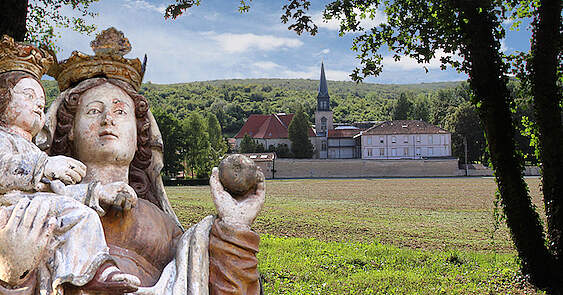
The village of Rambluzin-et-Benoite-Vaux is located in the department of Meuse, in northeastern France. Tradition has it that in this place, formerly called "Martin-Han" ("Martin's house"), a group of loggers were attracted by the celestial singing of the Ave Maria. Approaching the place, they discovered a statue of the Virgin Mother at the foot of an uprooted oak tree.
Amazed, they decided to build an oratory for her, and a hermit was appointed to guard it. With the influx of pilgrims, a more important place of worship was needed. A church was built under the name of "the Annunciation of the Virgin", entrusted to the Norbertine monks around 1140.
The name Benoîte-Vaux ("the Blessed Valley") appears for the first time in 1180 on a papal bull. This document confirms the donation of land and woods by the bishop of Verdun (Meuse), Albéron de Chiny, to the young community of Premonstratensians (a Catholic canonical order founded by Saint Norbert of Xanten at the beginning of the 12th century), which had grown out of the Abbey of Etanche.
The pilgrimage, still popular today, takes place every year during the first week of September for the feast of Benoîte-Vaux on September 9.
Adapted and translated from Sister Sheeba Keenanchery
https://www.notrehistoireavecmarie.com/fr/esc/notre-dame-de-benoite-vaux/